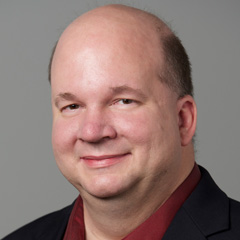Contamination Control Strategies: You have questions, we have answers

Annex 1 requires designing an effective contamination control strategy (CCS) based on a scientific assessment to understand the process and to apply risk management principles. In the “Contamination Control Strategies: Disinfectant Programs Support to Contamination Control” session, held Oct 4 during the 2021 PDA Pharmaceutical Microbiology Conference, presenters discussed designing an effective CCS in an aseptic cleanroom environment and moving toward compliance with proposed Annex 1 regulatory requirements for facility assessment.
In the Q&A session that followed, twenty minutes proved an insufficient amount of time to address the many questions posted on the “Ask A Question” board. Consequently, the three panelists—Rafael Beaus, PhD, Global Consultancy Manager, Azbil Telstar; James N. Polarine, Jr., Senior Technical Service Manager, STERIS Corporation; and Benoit Ramond, PhD, Head of Microbiology & Sterile Technology, Sanofi—collaborated to provide answers for those questions that remained.

We see that Annex 1 suggests doing things in a certain way, but it is not forcing us to do it. Can we continue doing things the same way?

You will see that all regulations suggest doing things, but this is a polite way of telling you how to do things. Not following these suggestions may mean getting into trouble in front of an inspection, as inspectors will expect you to follow those standards unless you can justify very well that there is a production process difficulty complying with any of them. I would not suggest continuing to do things the same way once [Annex 1] comes into force.

Is a CCS required to be a stand-alone document or can it be a collection of pre-existing documents?

Generally, before this CCS approach as defined in the new Annex 1 in the quality system, different documents exist on contamination control. When such documents are in place, I recommend, at minimum, to prepare a CCS head-document that defines the general principles of the CCS for all the elements needed to be included, and it will be important to refer to in that CCS head-document all the pre-existing individual documents related to contamination control.

What is the expected publication date for the new Annex 1 version? Is any delayed implementation expected (>6 months from publication)?

The publication date was expected to be some months ago, but the current situation led to delaying it several times. There isn’t anything confirmed, but it is expected by the end of the year or the beginning of next year, even though a new delay shouldn’t be a surprise. According to previous experience with new versions of regulations, there is always some time left for companies to comply with it, usually around one year. Nevertheless, as mentioned in the Q&A session, new facilities will be requested to comply right from the beginning, while some very old facilities, where updating may be impossible, will be pushed to use a CMO to make their production.

Will there be a time frame for the implementation of the new Annex 1, as soon as it becomes effective, for the companies to comply?

There is not a common rule, but we may expect around one year’s time to catch up or, at least, to develop a plan for catching up.

How to control B cepacia in a purified water system?

Burholderia cepacia would be a possible sign of a biofilm. I would recommend a cleaning step with an alkaline cleaner, followed by a diluted sporicide step.

What are your thoughts about the proposed microbial limits (air quality and surface cleanliness) in the new Annex 1, especially for the Grade A areas?

These limits are the same as the existing ones except for Grade A and, in fact, for Grade A, they are not that different from the previous ones: Less than 1 (which was the existing limit) is very close to “no growth,” which is the new limit. Today, in a well-controlled clean room, and even more if we talk about isolators or RABS, which are the new required standard, you get no contaminated plates on Grade A areas. So, the problem is not on the tight limit but in the technology (no more traditional laminar air flows) needed to consistently comply with it.

What exactly is the level of gowning that you think is appropriate for personnel in Grade D, when they are working at RABS/Isolators in the area?

The new version of Annex 1 specifies in detail how to be dressed in Grade D: Hair, beards and moustaches should be covered. A general protective suit and appropriately disinfected shoes or overshoes should be worn. Appropriate measures should be taken to avoid any ingress of contaminants from outside the clean area. Gloves should be worn in Grade C and D areas when performing activities considered to be a contamination risk as defined by the CCS.

We have a new facility using isolators. Should we perform environmental monitoring during SIP and/or CIP?

The new version of Annex 1 states:
- 9.5 – Routine monitoring of cleanrooms, clean air equipment and personnel should be performed in operation throughout all critical stages, including equipment set-up.
- 9.16 – For the Grade A zone, particulate monitoring should be undertaken for the full duration of critical processing, including equipment assembly.
- 9.26 – Viable particle monitoring should also be performed within the cleanrooms when normal manufacturing operations are not occurring (e.g., post disinfection, prior to start of manufacturing, on completion of the batch and after a shutdown period), and in associated rooms that have not been used, in order to detect potential incidents of contamination which may affect the controls within the cleanrooms***
Even risk assessments should justify what to do according to CCS; it is quite clear that SIP or CIP may be considered equipment set-up and, therefore, should be included in routine environmental monitoring.

Should personnel monitoring be done while manufacturing isolator operations are running?

Personnel working with isolators are located in Grade D and, therefore, their control should be done according to that environment requirement, always within the CCS strategy RA. Therefore, personnel control may be carried out as part of this area control, even if it is not that critical due to the grade we are talking about.

Should rinsing be performed following a fogging step?

If there is a concern about the residue left on the surfaces by the sporicidal, a WFI and 70% IPA rinse step can be performed, but it is not required.

Some of the cell and gene materials cannot be sanitized with disinfectants, especially with sporicidal agents. What are the industry standards for disinfecting these sensitive materials?

I would make sure the cell lines are removed from the area in enclosed petri dishes, and the best products would be sporicidal wipes, H2O2/Peracetic Acid chemistries, or other sporicidal chemistries to address fungal spores that are common in the gaskets of the incubators.

What frequency would you recommend for sporicidal disinfection for stainless steel production equipment?

I would base the sporicidal frequency on the frequency of hits of fungal and bacterial spores on the equipment. You can start using the sporicide at the end of the month and then increase it or decrease it based on environmental monitoring data.

Air showers are very popular in Japan for movement of materials; UV pass boxes are also used in industry. Do you see a trend towards the use of this equipment instead of relying strictly on transfer disinfection?

Definitely. Regular pass boxes will be used less and less as the degree of safety is much higher with the other methods.

Were there any health and safety issues in the industry with the use of VestaSyde disinfectant?

There will not be any EH&S issues using this quaternary ammonium disinfectant, and toxicity and SDS sheets are available from the manufacturer.

Were isolates besides ATCC strains used to test sporicidal efficacy, Chaetomium testing and for fungi studies?

The data presented in the presentation was with ATCC strains; however, when you conduct your coupon studies, we would recommend including your environmental isolates, which would typically include one or two mold spores and one or two bacterial endospores. I would recommend testing the bacterial spores with only the sporicide.

Do you have any recommendations for cleaning for mold prevention in areas where there is equipment with lots of occlusions and hard to reach areas, such as cryopreservation tanks?

I would recommend a sporicide such as a H2O2/Peracetic Acid chemistry for these very hard to reach areas. You would also want to evaluate these very cold temperatures with your coupon studies.

For bacteria and fungus on environmental monitoring plates, can an incubation temperature of 32+/- 2 °C for 120 hours be acceptable if it is validated, instead of incubating at separate temps (20-25 °C)?

A total aerobic count, including bacteria and fungi, can be done using one plate but, if the plate is only incubated at 30-35 °C, these conditions are not the best for growth of molds and some species should not grow. That’s why, in that case using one plate, a dual temperature (minimum 3 days at 20-25 °C immediately followed by a minimum of 2 days at 30-35 °C) is a compromise for growth of bacteria and fungi including molds. In the case of only one plate and one temperature, another option is to incubate at 25-30 °C supported by GPT on local wild isolates.

Would it be acceptable to use a sterile connector (e.g., Millipore LYNX S2S) in Grade C to transfer product from a single-use bag into an isolator filling line?

Yes, this type of connector claims to be as safe as RTP (alpha-beta) ports, used as standard connection of isolators.

For disinfecting floors of GMP areas, what points should we consider if we would like to move from manual (mop cleaning) to automatic floor cleaner?

I would evaluate the class of the cleanroom, as this would not be common practices in ISO-5, ISO-6, ISO-7 and most ISO-8 cleanrooms. Scrubber can be used in CNC areas and some ISO-8 cleanrooms. The particulates are a risk, and the scrubber would need to be compatible with the disinfectant. Molds also like to grow in these scrubbers; therefore, they would need to be maintained mold-free.

What is the industry standard in revising the cleanroom sampling sites in terms of frequency, and what statistical models are used?

Cleanroom sampling sites must be supported by a risk-based approach and, according to section 9.4 of the new Annex 1, this risk assessment should be reviewed regularly in order to confirm the effectiveness of the site’s environmental monitoring program. I recommend performing an annual review supported by trend analysis and part of the CCS requirements.

Can you claim sporicidal efficacy when you get less than 2-log reduction (at a certain contact time)?

I think the key is to consider the data was at a 5-minute wet contact time and, at 10 minutes, I would expect greater than 2-log reduction in bacterial endospores. Most cleanroom facilities will validate a 10-minute wet contact time.

Do we have any harmonized standards for the utility systems? I believe ISO-14644 Part 3 addresses several of the utility systems?

Some references:
- ISPE Good Practice Guide: Sampling for Pharmaceutical Water, Steam and Process Gases (2016)
- ISPE Baseline Pharmaceutical Engineering Guide, Volume 4: Water and Steam Systems (2019)

What is the best practice regarding the testing of sanitizers (testing at expiry, testing at certain time points, etc.?)

I think I would always recommend testing at expiry with a hold-time study if you use your disinfectant or sporicide in a spray bottle at, let’s say, 30 days. I would then include the 30-day time point.

How often does a company need to perform a disinfectant efficacy study?

I would review your environmental monitoring data on a yearly basis for any new isolates that come up, that occur frequently, or appear to be worst-case, and you may choose to validate against the new organism. Then, every 5-7 years, I would recommend looking at all your coupon test data and field trial data to see if new coupon studies need to be conducted based on new surfaces, lower log reductions, issues with controls, or a number of new microorganisms coming up in your monitoring program.



 Rafael Beaus, PhD, Global Consultancy Manager at Azbil Telstar, has more than 30 years of industry experience in facility management and quality assurance. He currently lectures worldwide on sterile production, pharmaceutical utilities, quality assurance and general production. Beaus is an Academic of the Royal Catalan Academy of Pharmacy and has also been a key trainer for the Spanish Medicine Agency.
Rafael Beaus, PhD, Global Consultancy Manager at Azbil Telstar, has more than 30 years of industry experience in facility management and quality assurance. He currently lectures worldwide on sterile production, pharmaceutical utilities, quality assurance and general production. Beaus is an Academic of the Royal Catalan Academy of Pharmacy and has also been a key trainer for the Spanish Medicine Agency. James N. Polarine, Jr., is a Senior Technical Service Manager at STERIS Corporation, where his current technical focus is microbial control in cleanrooms and other critical environments. He has lectured globally on issues related to cleaning and disinfection, microbial control in cleanrooms and validation of disinfectants. Polarine is a 2019 PDA Michael S. Korczynski Award recipient and the current President of the PDA Missouri Valley Chapter.
James N. Polarine, Jr., is a Senior Technical Service Manager at STERIS Corporation, where his current technical focus is microbial control in cleanrooms and other critical environments. He has lectured globally on issues related to cleaning and disinfection, microbial control in cleanrooms and validation of disinfectants. Polarine is a 2019 PDA Michael S. Korczynski Award recipient and the current President of the PDA Missouri Valley Chapter. Benoît Ramond, PhD, Director of Microbiology and Sterile Technology of Sanofi Group, plays a leading role in the Annex 1 implementation program within Sanofi and in the Sanofi global community on best practices for microbiology and sterile technologies. A frequent speaker at international seminars on the new Annex 1 rules for CCS, his other areas of expertise include alternative microbial methods, environmental monitoring programs, sterility assurance and visual inspection.
Benoît Ramond, PhD, Director of Microbiology and Sterile Technology of Sanofi Group, plays a leading role in the Annex 1 implementation program within Sanofi and in the Sanofi global community on best practices for microbiology and sterile technologies. A frequent speaker at international seminars on the new Annex 1 rules for CCS, his other areas of expertise include alternative microbial methods, environmental monitoring programs, sterility assurance and visual inspection.